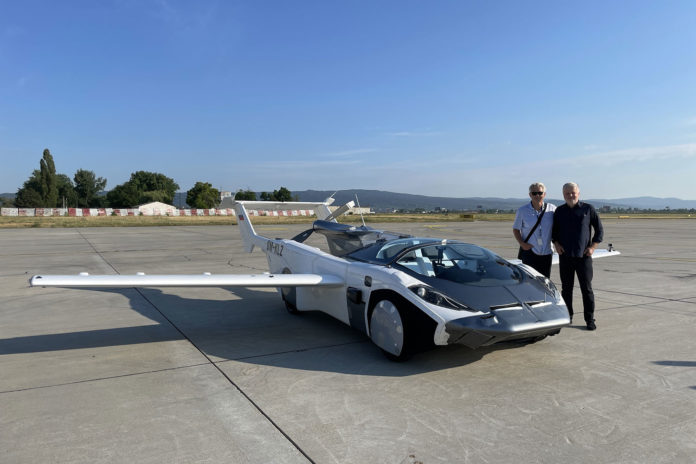Klein Vision, a Slovak company, has just made its name in history after carrying out its first long-distance flight with a flying car, or AirCar – a dual-mode car-aircraft vehicle. AirCar performed a 35-minute flight from the international airport in Nitra to the international airport in Bratislava on June 28.
According to the company, unlike eVTOLs (electric vertical take-off and landing aircraft), which look more like giant drones than real cars, this is a real car. That is, it serves both for transport on the road and in the air.
The first flight of the Klein Vision’s patent-protected AirCar saw it perform its first intercity trip and ace its 142nd successful landing, bringing it another step closer to production. Professor Stefan Klein, the inventor of the vehicle, operated the automobile in both modes. The flying car took less than three minutes to transition to driving mode at a click of a button once on the ground.
“This flight starts a new era of dual transportation vehicles. It opens a new category of transportation and returns the freedom originally attributed to cars back to the individual,” said Professor Klein after exiting the AirCar cockpit in Bratislava.
“AirCar is no longer just a proof of concept; flying at 8,200 feet at a speed of 100 knots, it has turned science fiction into a reality,” added Anton Zajac, the co-founder of Klein Vision.
The AirCar Prototype 1 is equipped with a 160 HP BMW engine with a fixed-propeller and a ballistic parachute. The AirCar has already notched up more than 40 hours of flight time under the supervision of the Civil Aviation Authority, including steep 45 degree turns and stability and maneuverability testing. AirCar Prototype 1 has flown at 8200 ft (2,500 m) and reached a maximum cruising speed of 190 km/h (103 knots).
The company has also revealed a few scant details on the upcoming AirCar Prototype 2, the pre-production model. It will be equipped with a 300 HP engine and receive the EASA CS-23 aircraft certification with an M1 road permit. With its variable pitch propeller, Prototype 2 is expected to have a cruise speed of 300 km/h (162 knots) and a range of 1000 km (621 miles).
